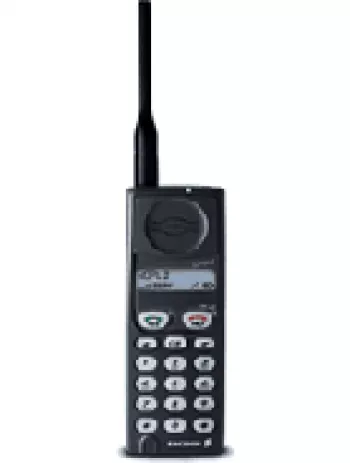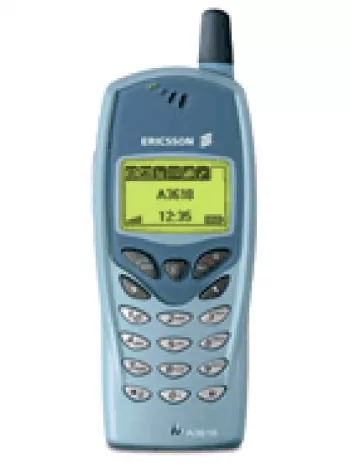
Introduction to the Ericsson GA 318
The Ericsson GA 318 is a classic mobile phone that was introduced to the market in 1995, marking a pivotal moment in mobile communication history. Although it might seem basic by today's standards, the GA 318 was quite revolutionary back then. Designed during an era when mobile phones were transitioning from being exclusive business tools to becoming accessible consumer gadgets, this model played a significant role in that evolution. In this article, we will discuss the various features and the impact it had on the mobile phone industry.
Design and Build
The design of the Ericsson GA 318 was quite distinctive with a dimension of 130 x 49 x 32 mm, weighing 248 g. Its robust build and solid construction were typical of the mid-90s mobile phones. It used Mini-SIM cards, which was the standard at the time. There were no touchscreens back then, which is why the GA 318 features an alphanumeric display that provided a basic interface for input and output. It had a monochrome screen capable of displaying 1 line of 12 characters, which was sufficient for the primary function of the device: making and receiving calls.
Display Characteristics
The alphanumeric display, although limited in functionality, was standard for the time. The phone's display was utilitarian, designed to show the essential information such as phone numbers and menu options. This simplicity ensured that the phone would be less prone to errors and more durable in terms of battery consumption—a crucial feature in the era of short battery life.
Performance and Usage
Running on its proprietary system typical of feature phones, the Ericsson GA 318 was optimized for primary tasks like voice calls and receiving SMS. Its performance was stable, given the limited functionalities of the era. However, it did not support advanced functionalities like app installation, internet browsing, or multimedia content playback, which were not standard at the time.
Network and Connectivity
The phone leveraged GSM technology, operating on GSM 900 bands, which provided it with decent call quality and connectivity within the service areas. Lacking advanced communication protocols like GPRS or EDGE, the phone did not support mobile data services, sticking to its core functionality as a communication device. There was no support for modern connectivity features such as WLAN, Bluetooth, GPS, or USB connections.
Audio and Sound Features
The Ericsson GA 318 came with basic audio functionalities. It offered monophonic ringtones and lacked a loudspeaker and a 3.5mm headphone jack. This meant that the user's customization options for sounds and alerts were fairly limited. However, for its primary purpose, the phone served well in terms of audio clarity during calls.
Battery Life
One of the key features of the GA 318 was its battery life. The phone was powered by a removable NiMH 1200 mAh battery, which supported up to 67 hours of standby time and 200 minutes of talk time. For users at that time, this represented a fairly impressive battery life, allowing for extended periods of use without frequent recharges. The removable battery also meant that users could carry a spare and replace it easily, enhancing the phone's practicality.
Miscellaneous Features
There were a few ancillary features built into the GA 318. The phone supported SMS messaging, albeit only for receiving messages—a somewhat common restriction in the early days of mobile text communication. It did not include modern features like alarm clocks, games, or a browser. The phone was available in three different colors, adding a bit of personalization to an otherwise utilitarian device. Language support was quite comprehensive, offering options for 12 languages, making it accessible to a larger audience globally.
Conclusion: The Legacy of the Ericsson GA 318
The Ericsson GA 318 stands as a notable example of early mobile phone technology. It's a device that reminds us of the era before smartphones and app ecosystems, where the primary aim was to provide reliable voice communication. It was witness to a period in technological history when the foundation for modern mobile communication was being laid. While it may not boast the capabilities of modern devices, its sturdy design, reliable performance, and no-nonsense approach to communication underscore its place in the annals of mobile history.
Key Features of Ericsson GA 318
- GSM Technology: Supports GSM 900 standard.
- Compact Dimensions: Measures 130 x 49 x 32 mm.
- Portable Weight: Weighs 248 g, easy to handle.
- Display: Alphanumeric screen with 1 x 12 characters resolution.
- SIM Support: Uses a Mini-SIM card.
- Battery Life: Removable NiMH 1200 mAh battery, with up to 67 hours standby and 200 minutes talk time.
- Alert Types: Supports monophonic ringtones.
- Language Support: Available in 12 different languages.
- Color Options: Available in 3 colors.
Disadvantages of Ericsson GA 318
- No GPRS or EDGE support.
- Discontinued model, announced in 1995.
- Heavy and bulky with a weight of 248 g.
- Alphanumeric display with limited resolution of 1 x 12 characters.
- No card slot for memory expansion.
- No phonebook available.
- No loudspeaker or 3.5mm audio jack.
- Lack of modern communication features like WLAN and Bluetooth.
- No GPS or radio functionality.
- SMS capability is limited to receiving only, cannot send messages.
- No clock or alarm feature.
- No games available.
- No Java support for apps.
- Removable NiMH battery with limited standby time of 67 hours.
View Also
More Phones
All Rights Reserved +14266 Phones © Mobilawy 2025

























